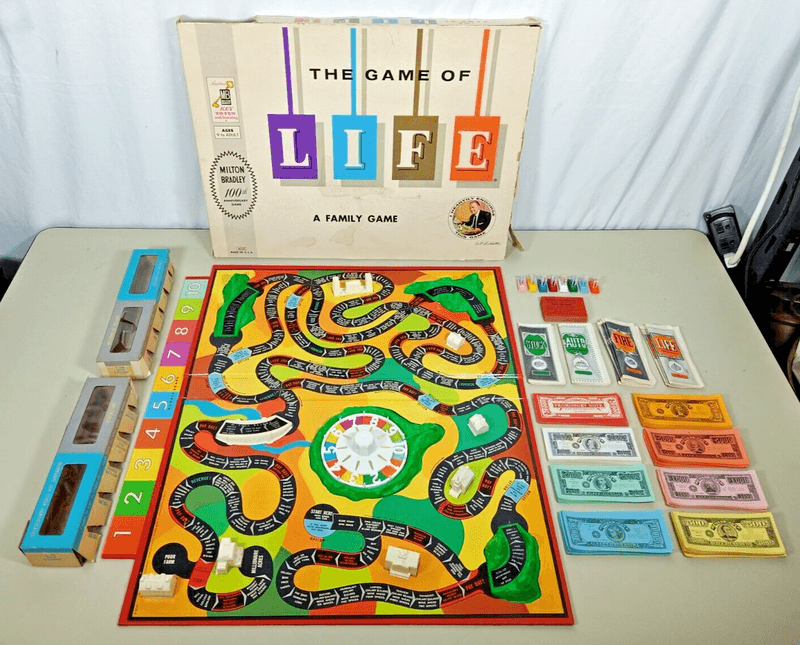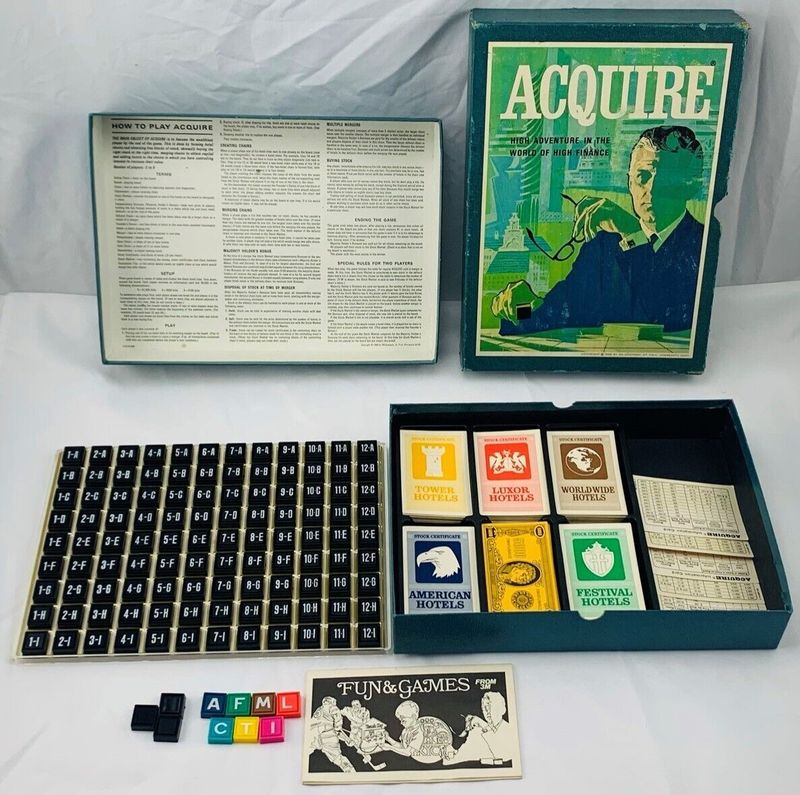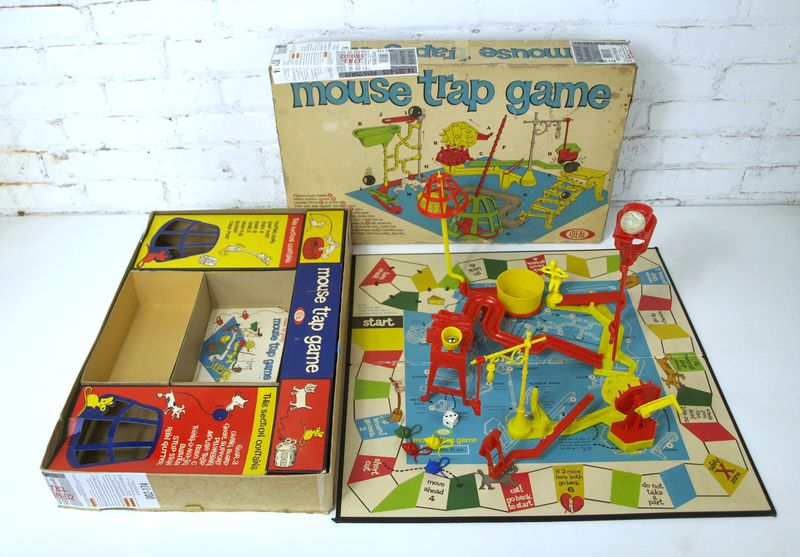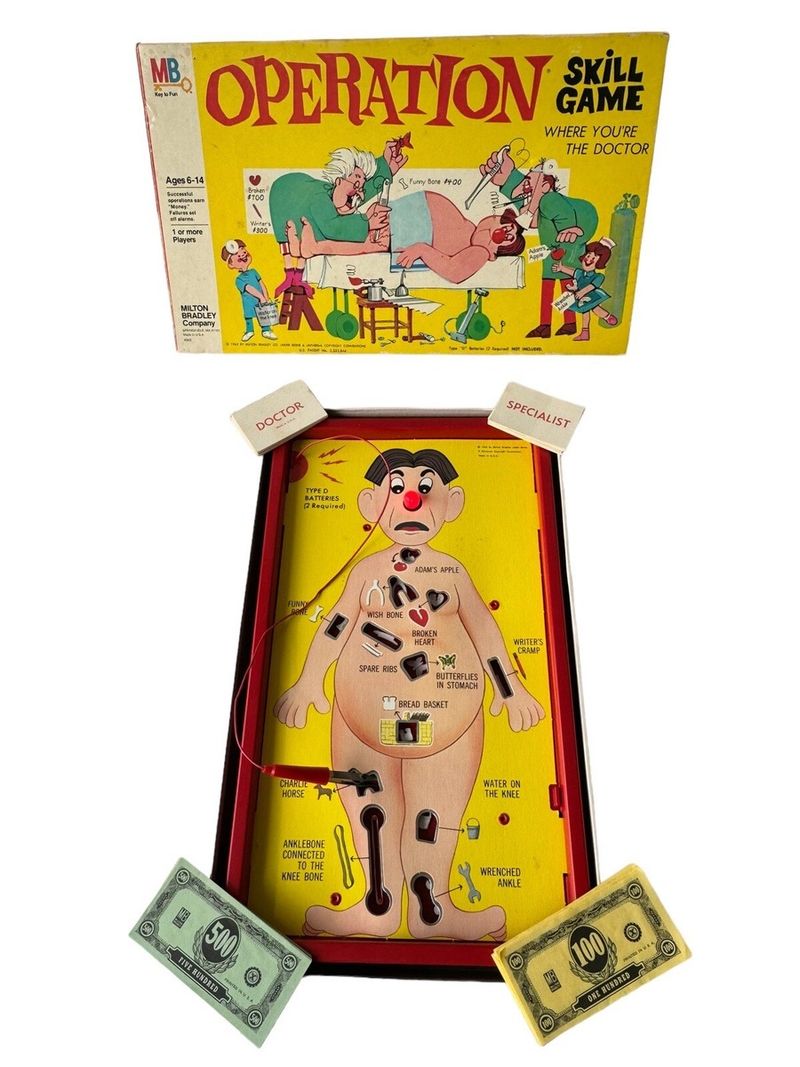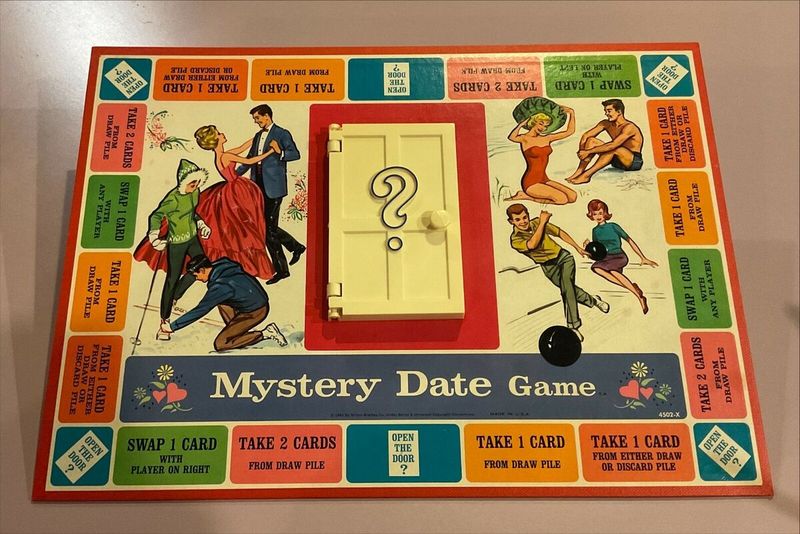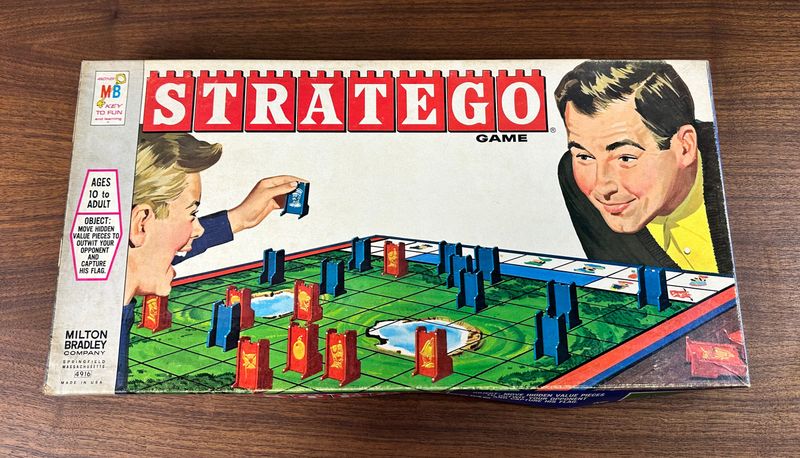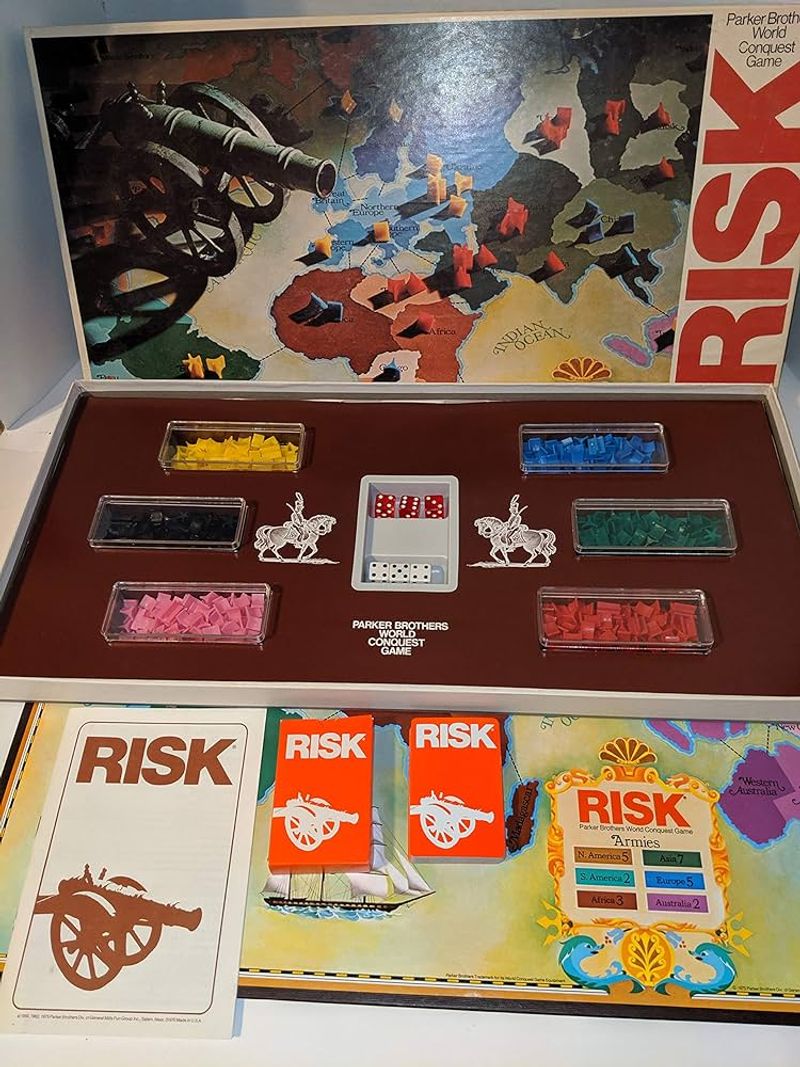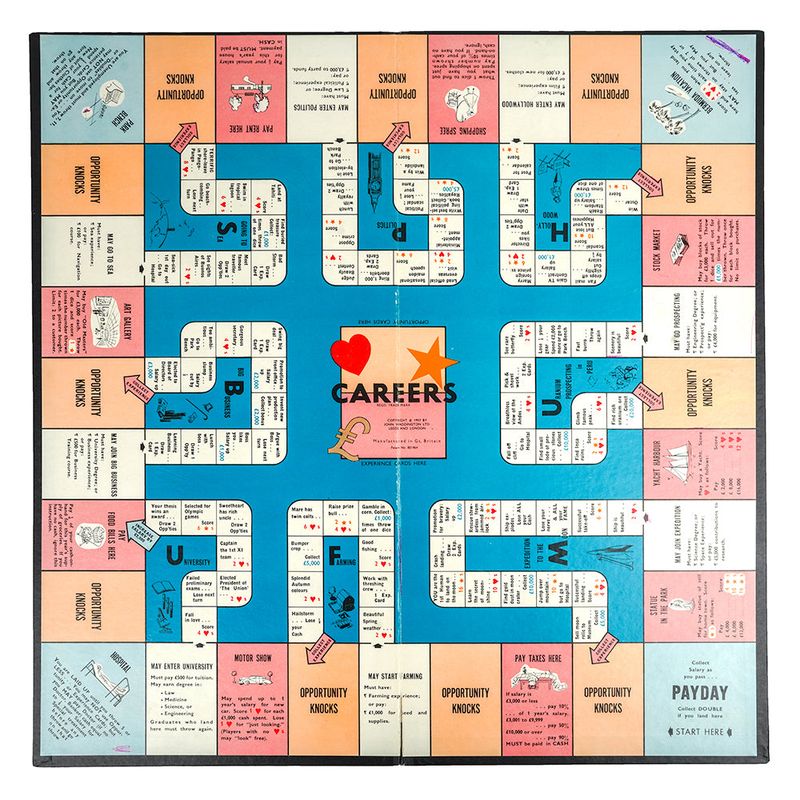Step back in time to the swinging 60s, a decade that brought forth some of the most beloved board games still cherished today. These games were more than just pastimes; they were a reflection of cultural shifts, technological advancements, and the playful spirit of a transformative era. Join us as we unearth ten iconic vintage board games from the 1960s, each with its unique charm and enduring appeal.
1. The Game of Life (1960)
The Game of Life, reimagined in 1960 by Reuben Klamer for Milton Bradley, did just that for countless families. Players navigated through college, career choices, marriage, and more, reflecting the optimism of post-war America. Its appeal lies in its ability to mimic real-life milestones in a fun, engaging way. Still in production today, this game’s nostalgic charm and strategic twists continue to entertain. With its colorful board and iconic design, it’s a timeless classic that resonates across generations.
2. Acquire (1962)
Acquire, designed by Sid Sackson for 3M, is a game of corporate conquests and financial acumen. Players found and merge hotel chains, vying for stock control and aiming to become the wealthiest investor. Its complex mechanics and strategic depth were groundbreaking at the time, laying the groundwork for modern economic board games. The thrill of orchestrating corporate takeovers captured the competitive spirit of the era. This game’s elegant design and engaging gameplay make it a standout, even decades later, inspiring countless enthusiasts. Acquire isn’t just a game; it’s a masterclass in strategy and economics from a bygone era.
3. Mouse Trap (1963)
Mouse Trap, introduced by Ideal Toy Company, captured imaginations with its playful, mechanical contraption. Players piece together a Rube-Goldberg-style device, each turn bringing the structure closer to completion. The excitement builds as one misstep sends an opponent’s mouse flying. This ingenious game was revolutionary, introducing interactive play that captivated children and adults alike. Its charm lies in the anticipation of the chain reaction, combining fun with a touch of suspense. The vibrant components and imaginative design made Mouse Trap an enduring favorite, symbolizing the innovative spirit of 1960s toy-making.
4. Operation (1965)
Steady hands and nerves of steel were essential in Operation, created by John Spinello for Milton Bradley. This dexterity-based game challenged players to remove ailments from a cartoon patient without triggering the dreaded buzzer. The light-up nose and buzzing sound became iconic features, adding to the game’s appeal. Its innovative design and humorous elements made Operation a family favorite, offering both challenge and entertainment. The game’s tactile engagement and quirky ailments ensure it remains a staple on game shelves worldwide. Operation is more than a game; it’s an unforgettable experience that brings laughter and skill to every play session.
5. Mystery Date (1965)
Remember the excitement of opening the door to your mystery date? ‘Mystery Date’ was a game that captured the imagination of young girls in the 60s, offering a playful glimpse into teenage social life. Players would spin and trade cards, hoping to reveal their perfect date behind the plastic door.
What made this game enchanting was its blend of anticipation and social interaction, allowing players to giggle at the prospect of either a dream date or a dud. Each turn was filled with suspense and joy, as players navigated the colorful board adorned with 60s fashion illustrations.
‘Mystery Date’ was more than just a game; it was a rite of passage, a playful exploration of teenage dreams and friendships that resonated with many.
6. Stratego (U.S. release c.1961)
Stratego, originally a Dutch game, found its American audience through 3M and Parker Bros. in the early 60s. This strategic battle game combines elements of bluff and memory, challenging players to capture the flag on a 10×10 grid. Its hidden pieces and tactical depth made it a family favorite, offering hours of intense, brain-teasing fun. The simplicity of its rules, paired with complex strategy, ensured its lasting appeal. Stratego’s mix of cunning and courage mirrors the strategic mindset of its era, making it not just a game but a battle of wits that continues to challenge and entertain.
7. Risk (1959–‘60s boom)
Although released in 1959, Risk’s popularity surged during the 60s, becoming a staple of strategic gaming. Designed by Albert Lamorisse for Parker Brothers, it invites players to embark on global conquest through dice-driven battles and troop movements. Its geopolitical theme resonated during the Cold War, offering a playful outlet for strategic minds. The game’s richly detailed world map and strategic depth captivated players, fostering countless rivalries. Risk’s blend of luck and strategy makes it a timeless classic, engaging players in world domination fantasies that are both thrilling and intellectually stimulating.
8. Battleship (plastic edition, 1967)
The iconic Battleship made a splash with its 1967 plastic edition by Milton Bradley, transforming naval warfare into a game of wits and strategy. Players secretly deploy their fleet, taking turns calling out coordinates in a suspenseful battle of deduction. The shift from cardboard to plastic components added a tactile, visual appeal that solidified its legendary status. The game’s simplicity and suspenseful gameplay continue to capture imaginations, making it a staple in family game nights. Battleship’s enduring popularity proves that sometimes, the simplest concepts create the most engaging experiences, with each game a new voyage into the unknown.
9. Careers (1955, ’60s heyday)
Though introduced in the mid-50s, Careers gained massive popularity throughout the 60s. Designed by James Cooke Brown for Parker Brothers, it offers players an engaging journey through varied career paths. The game’s unique objective allows players to define personal success through combinations of fame, happiness, and money. Unlike Monopoly, Careers provides a multifaceted approach to winning, reflecting the evolving societal values of the era. Its vibrant board and customizable strategy resonated with players, offering endless possibilities. Careers remains a classic choice for those seeking a game that mirrors the complexity and diversity of real life.
